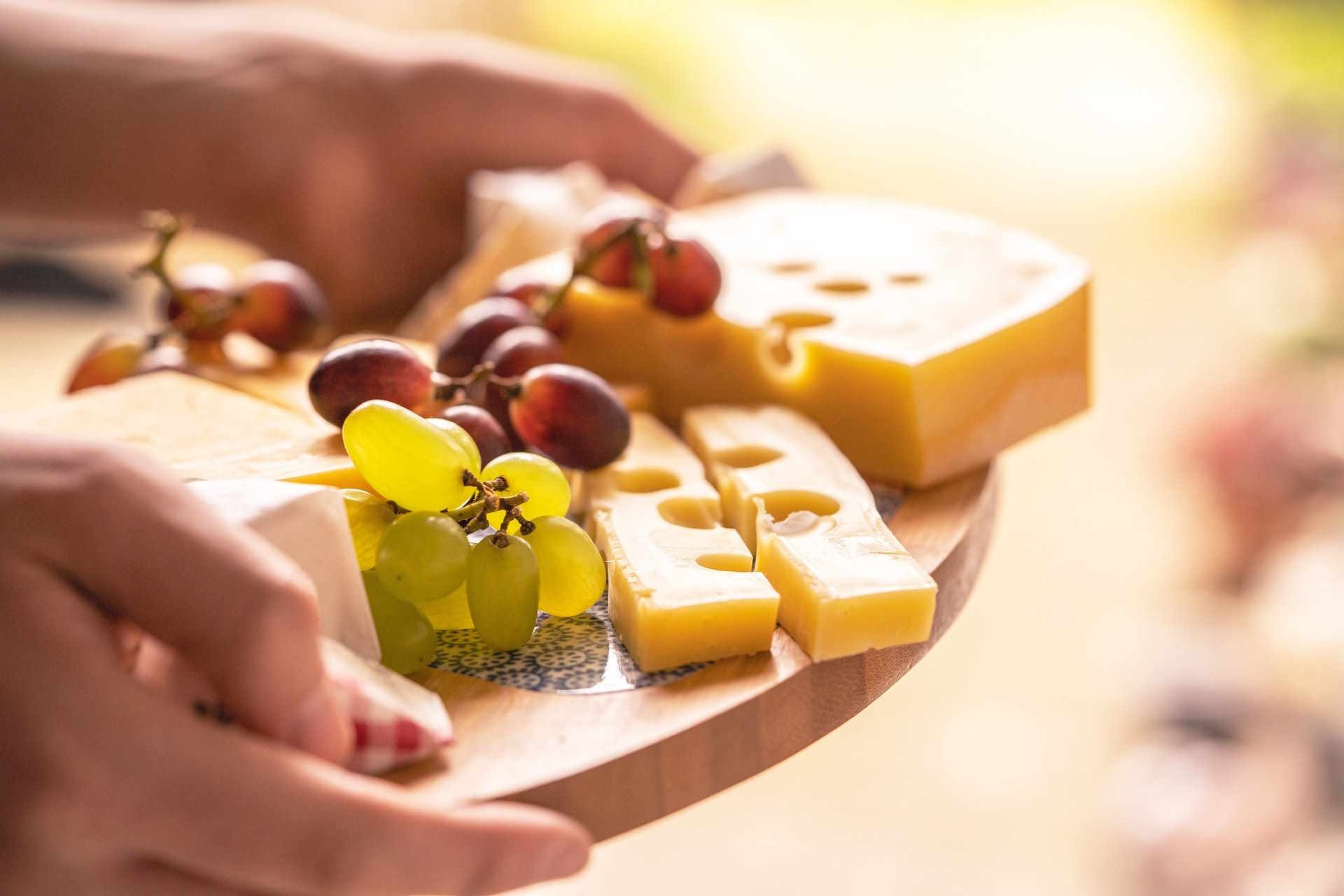Charcuterie Boards Go Botanical: A Fresh Twist on an Old Favorite
Introducing the latest trend in entertaining: botanical charcuterie boards. This fresh take on the classic appetizer platter swaps out meats and cheeses for a vibrant array of fruits, vegetables, and edible flowers. Perfect for health-conscious hosts and plant-based eaters alike, these eye-catching spreads are as delicious as they are Instagram-worthy.
This new trend originated in health-focused cafes and restaurants, where chefs began experimenting with creative ways to present plant-based appetizers. Soon, home cooks and food bloggers caught on, sharing their vibrant creations on social media platforms. The result? A beautiful fusion of art and nutrition that’s as pleasing to the eye as it is to the palate.
Botanical boards aren’t just about replacing meat with vegetables. They’re an opportunity to showcase the incredible diversity of plant-based foods, from exotic fruits to heirloom vegetables and edible flowers. This approach not only caters to various dietary preferences but also encourages people to explore new flavors and textures they might not have tried otherwise.
A Rainbow of Ingredients: Building Your Botanical Board
Creating a stunning botanical board is all about variety, color, and texture. Start with a base of leafy greens like kale or butter lettuce to add volume and create a lush backdrop. Then, layer on a mix of raw and roasted vegetables in various shapes and sizes. Think rainbow carrots, watermelon radishes, and multicolored cherry tomatoes for a pop of color.
Don’t forget about fruits! Berries, figs, and sliced stone fruits add sweetness and visual interest. For protein, include a selection of nuts, seeds, and legumes. Roasted chickpeas, spiced pumpkin seeds, and candied walnuts offer satisfying crunch and flavor.
Dips and spreads are essential for any charcuterie board, and botanical versions are no exception. Offer a variety of plant-based options like beet hummus, avocado mousse, or roasted red pepper dip. These not only add flavor but also serve as vibrant focal points on your board.
Finally, elevate your creation with edible flowers. Nasturtiums, pansies, and borage blossoms not only look beautiful but also offer subtle, unique flavors that complement the other ingredients.
Elevating Presentation: The Art of Arrangement
The visual appeal of a botanical board is just as important as its taste. Start by choosing an interesting serving surface – a wooden board, slate tile, or even a large leaf can make for an eye-catching base. Arrange your ingredients in a way that showcases their natural beauty. Create swooping curves with sliced vegetables, build small towers of stacked fruits, and scatter nuts and seeds to fill in gaps.
Color is key in creating an appealing botanical board. Aim for a rainbow effect by grouping similar colors together and then dispersing them across the board. This creates a sense of harmony while still offering visual excitement.
Don’t be afraid to play with height and texture. Use small bowls or cups to hold dips and spreads, creating dimension on your board. Fold large leaves like Swiss chard or collard greens to create pockets for holding smaller items.
Remember, the goal is to create a board that invites exploration and encourages grazing. Leave some space between items to make it easy for guests to navigate the board and try different combinations.
Beyond the Board: Creative Serving Ideas
While a traditional board or platter is the most common way to serve a botanical spread, don’t be afraid to think outside the box. For a unique presentation, try arranging your ingredients in a large, shallow basket lined with banana leaves. This creates a tropical, abundant feel perfect for summer gatherings.
For individual servings, consider using mason jars or tall glasses to create vertical botanical “parfaits.” Layer cut vegetables, fruits, and nuts, with dips or spreads in between. This not only looks impressive but also allows guests to easily grab their own portion.
For a whimsical touch, hollow out a large watermelon or pumpkin (depending on the season) and use it as a vessel for your botanical spread. This unexpected presentation adds an element of fun and reduces cleanup.
Seasonal Inspirations: Year-Round Botanical Boards
One of the joys of botanical boards is their adaptability to seasonal produce. In spring, showcase tender asparagus spears, pea shoots, and edible flowers like violets. Summer boards can feature an abundance of berries, stone fruits, and vibrant heirloom tomatoes.
As autumn arrives, shift to heartier fare with roasted root vegetables, figs, and pomegranate seeds. Winter boards can highlight citrus fruits, persimmons, and colorful varieties of winter squash. By following the seasons, you’ll not only create more interesting boards but also support local agriculture and enjoy produce at its peak flavor.
Botanical Board Basics: Tips for Success
-
Always wash and thoroughly dry all produce before arranging on your board
-
Cut larger fruits and vegetables into bite-sized pieces for easy eating
-
Offer a variety of textures: crunchy, soft, juicy, and creamy
-
Include both familiar and exotic items to cater to different preferences
-
Provide small serving utensils or toothpicks for easy handling
-
Label any unusual items to encourage guests to try new things
-
Keep dips and spreads fresh by nestling their containers in ice
In conclusion, botanical charcuterie boards offer a fresh, healthy twist on traditional appetizer spreads. By embracing the natural beauty and diversity of plant-based ingredients, you can create stunning, delicious displays that cater to a wide range of dietary preferences. Whether you’re hosting a casual get-together or a formal dinner party, a well-crafted botanical board is sure to impress and delight your guests. So gather your favorite fruits, vegetables, and edible flowers, and let your creativity bloom!






